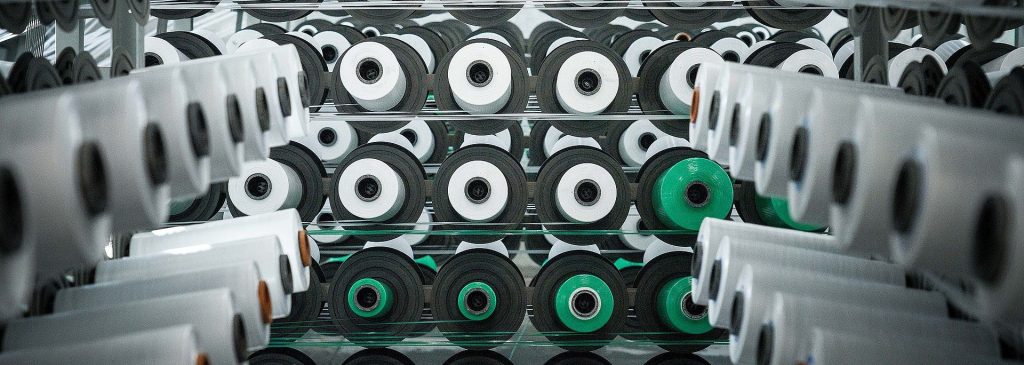
“Why are FFS (Form-Fill-Seal) roll woven bags becoming the backbone of China’s agricultural and food packaging industry?” asked Ray, CEO of VidePak, during a recent strategy meeting. The answer lies in their versatility, cost-efficiency, and ability to meet diverse product-specific requirements—from pest resistance to moisture control—while aligning with China’s industrial automation trends. This report explores how VidePak’s FFS roll woven bags address these challenges and capitalize on market opportunities.
H2: Product Requirements Across Agricultural Applications
H3: Seed Packaging: Balancing Breathability and Protection
Seeds require precise humidity control to maintain germination rates. FFS roll woven bags with controlled permeability (≤0.5% moisture ingress) prevent mold growth while allowing minimal gas exchange. For example, rice seeds stored in VidePak’s 90 g/m² PP bags with PE lamination showed a 95% germination rate after 12 months, compared to 78% in non-laminated alternatives.
Key Parameters:
| Product | Thickness (mm) | Lamination | Inner Liner |
|---|---|---|---|
| Seeds | 0.10–0.12 | PE-coated | Perforated PP |
| Nuts | 0.15–0.18 | BOPP | Aluminized foil |
H3: Grain and Cereal Storage: Pest and Moisture Defense
For grains like wheat and corn, insect resistance is critical. VidePak integrates UV-stabilized PP and anti-static coatings to deter pests. A 2024 study by the China Grain Storage Association found that bags with 120 N/cm² tensile strength reduced infestation rates by 40% compared to standard designs.
Case Study: A soybean exporter in Heilongjiang reduced spoilage losses by 22% after switching to VidePak’s double-layered FFS bags with hermetic seals.
H3: Coffee and Starch: Humidity Sensitivity
Coffee beans demand ultra-low moisture permeability (<0.3%) to preserve aroma. VidePak’s multi-wall laminated bags with aluminum foil layers achieve this, while starch packaging prioritizes anti-caking properties via food-grade silica gel liners.
H2: Technical Design and Parameter Selection
H3: Thickness and Grammage
- Thickness: Ranges from 0.08 mm (lightweight grains) to 0.20 mm (coffee, nuts).
- Grammage: 80–150 g/m², balancing strength and cost. Higher grammage (≥120 g/m²) is recommended for jagged products like almonds to prevent punctures.
H3: Lamination and Inner Liners
- PE/BOPP Lamination: Enhances moisture resistance for rice and wheat.
- Aluminized Liners: Essential for coffee and nuts to block UV and oxygen.
- Breathable Films: Used for seeds, allowing 200–300 g/m²/24h vapor transmission.
FAQs:
Q: How does bag size impact logistics efficiency?
A: Standard 50 kg bags (90×55 cm) optimize palletization, reducing shipping costs by 15%.
Q: Are recycled materials viable for food-grade bags?
A: VidePak’s FDA-compliant recycled PP meets ISO 22000 standards but is limited to non-direct contact applications.
H2: VidePak’s Competitive Advantages
H3: Production Scalability
With 100+ Starlinger circular looms and 30 lamination machines, VidePak produces 500,000 FFS bags daily. Their 14-day lead time outperforms competitors’ 25-day averages.
H3: Customization Capabilities
- Multi-Color Printing: Supports branding and regulatory labels (e.g., QR codes for traceability).
- Anti-Static Options: Critical for flammable starch dust environments.
H2: Market Trends and Strategic Positioning
H3: Automation-Driven Demand
China’s push for smart manufacturing has boosted FFS bag adoption. VidePak’s collaboration with Hunan Zhregion Ltd. on IoT-enabled bags (with humidity sensors) reduced spoilage by 18% in pilot trials.
H3: Sustainability Compliance
VidePak’s 30% recycled PP bags align with China’s 2025 Circular Economy Plan. Their solar-powered facilities cut CO₂ emissions by 1,200 tons annually.
“In packaging, precision isn’t a luxury—it’s a necessity,” emphasized Ray. By merging technical rigor with market insights, VidePak is redefining FFS roll woven bags as a strategic asset for China’s agricultural revolution.
For further insights, explore our resources on moisture-proof solutions for diverse applications and high-speed FFS production strategies.
Appendix: Product Parameter Table
| Application | Thickness (mm) | Grammage (g/m²) | Lamination | Special Features |
|---|---|---|---|---|
| Seeds | 0.10–0.12 | 80–90 | PE | Perforated liner |
| Coffee | 0.18–0.20 | 120–150 | BOPP + Alu | UV barrier |
| Nuts | 0.15–0.18 | 100–120 | BOPP | Anti-static |
| Starch | 0.12–0.15 | 90–110 | PE | Silica gel pouch |
FAQs
Q: How do I choose between PE and BOPP lamination?
A: PE is cost-effective for moisture resistance; BOPP offers superior print clarity and UV protection.
Q: Can FFS bags withstand tropical climates?
A: Yes, VidePak’s tropical-grade bags with 15000 mmH2O waterproof ratings are tested in Southeast Asia.